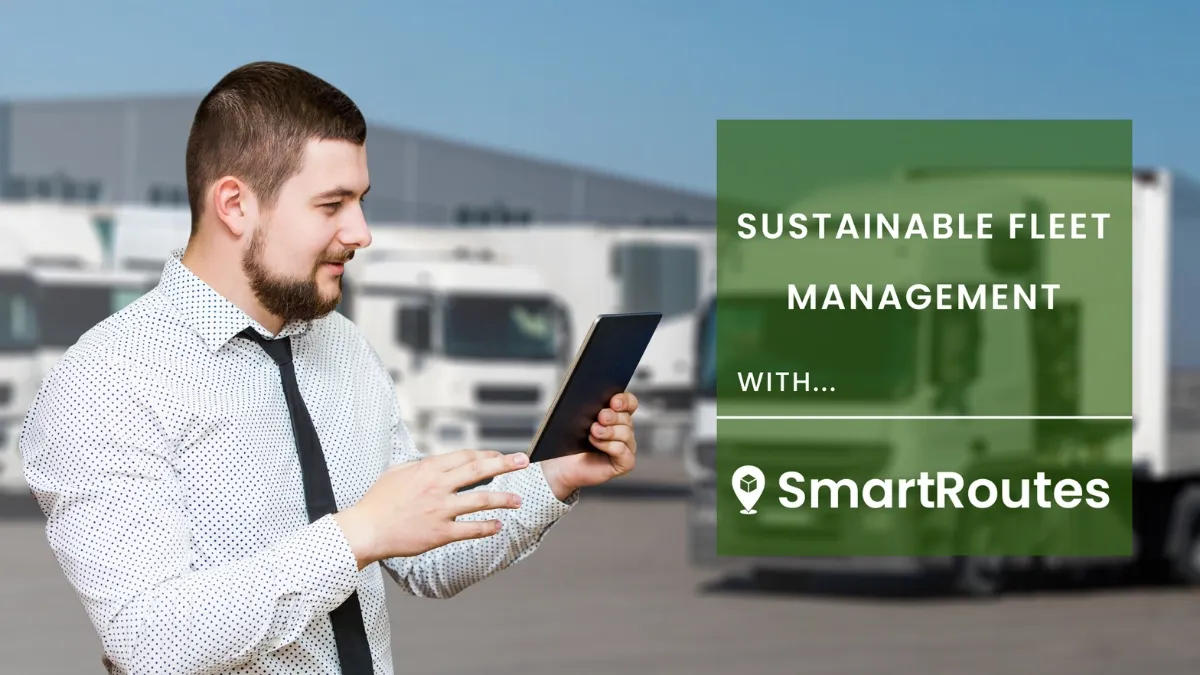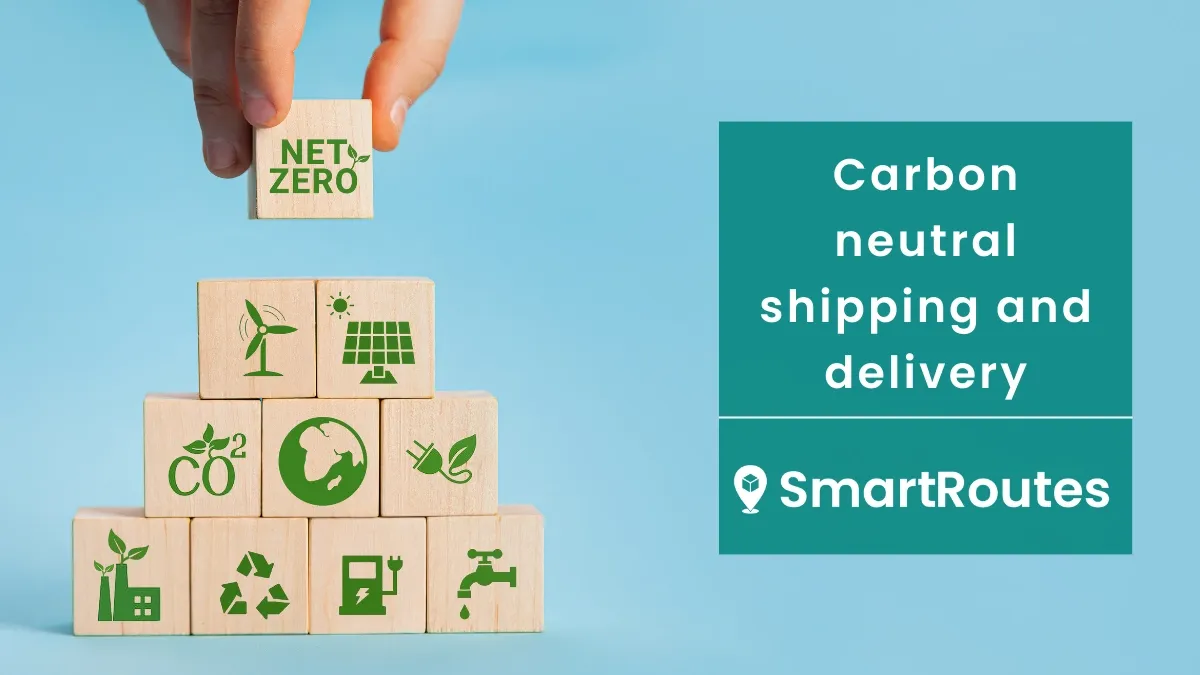The Case for Sustainable Delivery & Green Route Planning
Discover the benefits of sustainable delivery, green route planning, and how businesses can reduce costs, meet environmental goals and attract eco-conscious customers.
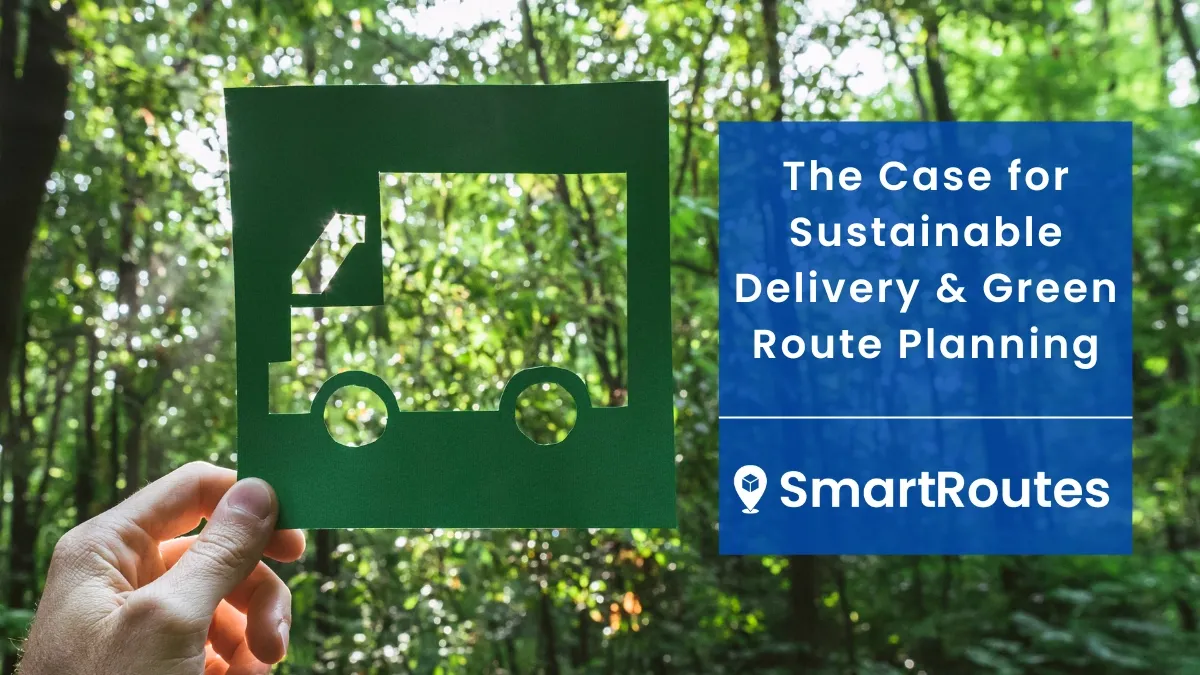
Even the biggest skeptics of climate change must surely now be aware of the natural disasters that are unfolding throughout the world. It seems that many states in the US are in the midst of a never-ending cycle of heatwaves, droughts and biblical levels of rainfall.
For those who are still skeptical, the result will be the same. The world we now live in will be dictated to a large degree by how we adapt to a changing climate. For those of us in the logistics and transport businesses, we will face increased regulations from governments and demands from consumers in the coming years, and sustainable delivery will find itself at the top of our agenda.
How we cope with these challenges will be down to how we prepare now. As the saying goes, ‘knowledge is power’, and this guide will aim to provide you with at least some new knowledge of how sustainability will impact your delivery business in the coming years.
We’ll start by taking a quick look at what exactly sustainable delivery is. We’ll then try to provide you with a broader understanding of what it will look like in practice. We’ll also delve into why it is imperative that you begin your transition to a greener delivery operation, and finish by giving you some actionable tips for beginning your journey to more sustainability.
Delivering Goods Sustainably Needs to be Top of Your Agenda
Green Transport Processes That Will Serve Your Businesses With Immediate Effect
What is Sustainable Delivery?
Sustainable delivery, in the context of modern logistics, refers to the eco-conscious transportation of goods and services from one point to another, emphasizing environmentally and socially responsible practices. The primary goal is to mitigate adverse ecological and societal impacts while meeting immediate delivery needs, all while safeguarding the ability of future generations to meet their own requirements.
At the core of sustainable delivery, is the effort to ensure that consumers receive their goods in a way that is sustainable and reduces the impact on the environment as much as possible in the most resource-intensive stage in the supply chain.
It is often referred to by other terms such as green last mile delivery, eco-friendly delivery, and other similar phrases. Historically, little attention was paid to the environmental impact of the delivery industry, hence the ambiguity around what it should be definitively called.
SmartRoutes Green Route Planning Software
Streamline your entire delivery process, all from one platform

Delivering Goods Sustainably Needs to be Top of Your Agenda
While some businesses took the lead on eco-awareness as a way of reducing their carbon emissions for altruistic reasons, others found themselves adopting environmental policies due to customer demand for greener goods and services from the businesses they purchase from.
While many have ridden this ‘green wave’, there are still many businesses that have seen the costs of transitioning to more sustainable business models as being too cost-prohibitive, at least in the short term. Obvious examples of these additional costs in the last-mile delivery industry have been compostable and reusable packaging, which costs more than plastic or cardboard, and the upfront cost of electric vehicles (EVs) still outweighs the cost of diesel-engined vans and trucks.
However, for those who haven’t moved to adapt their delivery businesses to sustainable practices, the weight of impending regulations and consumer consciousness is going to be heavy. With many US states planning to phase out fossil fuel vehicles in the next decade, continuing to run solely combustion-engined fleets up until that point will mean the financial outlay for an entirely new fleet could be fatal to businesses (we still have no idea how delivery EVs are going to hold their value, and there’s sure to be a shortage of stock). Furthermore, transport managers and delivery operators that have already tried at least some EVs in their fleets will have the advantage of knowing what to expect in terms of running costs, maintenance schedules, and most critically, battery range. With delivery giants like Amazon already running 5,000 Rivina EVs in their fleet, it's becoming necessary to at least trial what will become the only option for fleet owners and operators in the very near future.
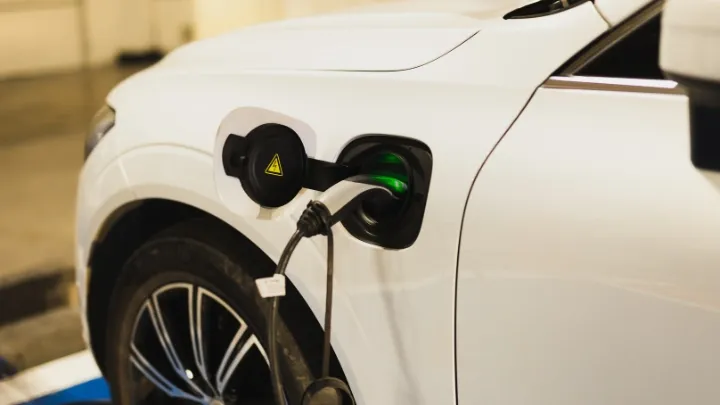
By getting ahead of the curve in making your delivery fleet more sustainable, you are giving yourself the best chance to adapt to fully electric vehicles, once the time comes.
The added incentive, of course, is catering to the evolving consumer who is already actively seeking more environmentally friendly options in their goods and services. Studies have shown that the customer retention rate for delivery businesses can be quite high, and by attracting customers now based on a sustainable delivery ethos, you can build and expand your businesses, capitalizing on the fact that many other businesses may delay their adoption until regulations necessitate it.
While these reasons alone should incentivize you to stomach some short-term financial pain to set your delivery business up for the future, there is likely to be an even greater incentive coming down the line in the future in the form of government funding and grants for delivery operations that can prove their effectiveness in reducing their environmental impact. Already, there is a Commercial Clean Vehicle Credit available to businesses in the US that will reimburse the costs of a new commercial EV up to $40,000 under the Internal Revenue Code. On the infrastructure side of things, there is still a 30% credit available on EV chargers available up to $1000.
Such incentives are just that; incentives.
However, once combustion engines are phased out, and electric vehicles become the standard, there will no longer be a government obligation to provide 'incentives' for this transition. The responsibility and financial burden will be solely on businesses.
Green Transport Processes That Will Serve Your Businesses With Immediate Effect
While the financial considerations around materials and new EVs may play on the minds of logistics managers and transport operators, there is a more practical approach that serves the environment, your customer and your pocket. At SmartRoutes, we’re well aware of how fine the profit margins can be in the last mile industry and we fully understand that minor changes to your processes can have big impacts on profitability.
That’s why we are always keen to ensure that the solutions we provide work out of the box, show return on investment within the first month, and help both you & your customer because of your commitment to reducing your carbon footprint. At the center of our design process, we ask two questions:
- Does this feature/module reduce the environmental impact of a delivery business?
- Does this feature/module positively impact the finances of a delivery business?
In creating a solution that combines both of these outcomes simultaneously, we know that there is an incentive for every delivery business to make the decision to become more sustainable.
We believe that financial and environmental sustainability should not be mutually exclusive. They should be fully complimentary.
Below, we outline 5 ways SmartRoutes does this:
1. Green Route Planning
The advances of modern technology have had a pretty universal commonality at their core; increased computational power that solves algorithms in seconds, that would take a human infinitely longer. At its most basic, when you ask Microsoft Excel to make a calculation based on hundreds of thousands of data points, that’s what happens.
Route planning software works in the exact same way, by accounting for your available delivery vehicles and their capacities, and the group of orders that need to be delivered to various addresses in a given timeframe. By default, route planning and route optimization work to find the most efficient way to serve those deliveries with the resources available.
Optimizing routes results in reduced travel distances, minimizing fuel wastage on unnecessary long journeys and saving driver hours, which is an additional financial benefit for your business.
2. Paperless Proof of Delivery
In addition to being prone to damage or loss, and easily forged, paper-based proof of delivery is much less sustainable than electronic proof of delivery.
Every year, couriers and delivery companies spend thousands on triplicate POD books that then need to be stored either physically or digitally at a warehouse.
Electronic proof of delivery allows drivers to capture photo and e-signature proof of delivery from consignees (with reduced potential for unauthorized signatures in their absence), and a digital copy is stored automatically on a central database that can be accessed at a moment's notice.
Another win-win for environmental and financial sustainability.
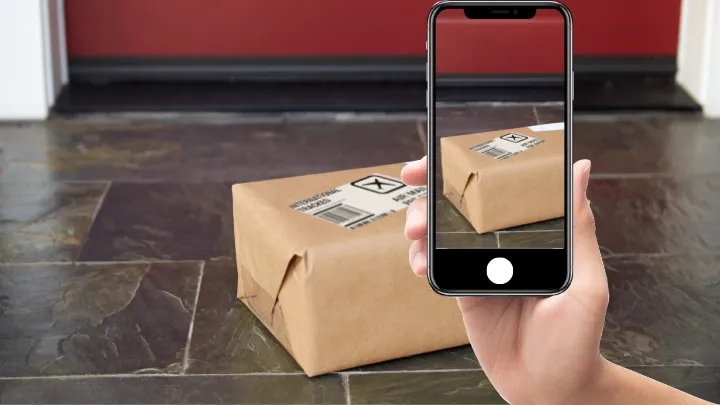
3. Elimination of Missed Deliveries
One of the main benefits of SmartRoutes' solution is the elimination of missed deliveries. The fuel waste associated with missed deliveries is a double blow for a delivery business's finances. This is due to the fact that both the initial delivery attempt and the subsequent re-routed delivery result in increased fuel consumption and driver hours per delivery, which are avoidable added expenses.
Our driver apps are designed to give drivers as much detail as possible about a delivery and associated customers to ensure that they maximize their successful delivery rates. This includes providing them with the customer's name, phone number and address, as well as integrations with solutions like What3Words to ensure they know exactly where a drop location is.
4. Enabling Omnichannel Logistics
Omnichannel logistics involves coordinating and harmonizing various aspects of the final mile order and fulfillment procedure. This approach, also known as omnichannel distribution, is widely embraced by the retail and logistics sectors to expedite the delivery of products to customers with maximum speed and efficiency.
In essence, it means that customers can choose to pick up an order in store, have it delivered to a pick-up and drop-off (PUDO) locker, or have it delivered directly to their home if necessary.
By offering customers the option to pick up in-store or at a PUDO, it allows them to pick up their order at their convenience and removes the need for a delivery vehicle to waste resources to drop it off at their home. Many consumers are now demanding this kind of flexibility, and those who offer it are likely to win more business.
Again, this means greater revenue, bigger profit margins, and a reduced carbon footprint for your business.
5. Sustainable Fleet Management
Sustainable fleet management is a pretty broad term, but at its core is simply the pursuit of good practices on behalf of logistics managers. Something as simple as keeping an eye on the tire pressure of your fleet is something that should be done for the safety of drivers as part of routine vehicle inspections.
But there’s a financial incentive for it too. Research from NACFE reveals that tires running just 10 PSI under their recommended pressure, see an increase of 0.5-1.0% in fuel consumption.
While this might seem like a small number, when you consider the ever-increasing cost of fuel and multiply it by a fleet of vehicles, it can lead to a loss of earnings in the thousands of dollars for a transport business.
While SmartRoutes does not play the role of a transitional telematics solution, it does enable better utilization and tracking resources by centralizing data on a Delivery Management System.
Interested in learning more about the benefits of sustainable delivery?
We can help you to undertake a sustainability audit that will help you to understand the real-term benefits of making the transition before you begin a free trial of our delivery solution.
Whether you're planning to transition to a zero-emission fleet or planning to establish a sustainability policy, we can provide you with insights and recommendations based on our experience supporting countless businesses in the same position.
Frequently asked questions
1. What are the key benefits of sustainable delivery for businesses?
Sustainable delivery practices offer several benefits to businesses, including:
- Cost Savings: Businesses can reduce fuel and operational costs by optimizing delivery routes and using more fuel-efficient vehicles.
- Environmental Responsibility: Adopting sustainable delivery practices helps reduce the carbon footprint, contributing to a positive corporate image and attracting environmentally conscious customers.
- Competitive Advantage: Businesses that demonstrate commitment to sustainability may gain a competitive edge and attract consumers who prioritize environmentally friendly services.
2. How does green route planning work, and what are its advantages?
Green route planning involves optimizing delivery routes to minimize environmental impact. Route optimization helps to identify the most efficient and eco-friendly delivery routes, which may involve avoiding traffic, using alternative fuels, or planning routes to reduce mileage. Efficient scheduling of deliveries reduces the number of trips and ensures that vehicles leave their depots fully loaded.
3. What challenges do businesses face when transitioning to sustainable delivery practices?
Businesses transitioning to sustainable delivery practices may encounter several challenges, including:
- Upfront Costs: Purchasing eco-friendly vehicles or upgrading technology for route optimization can be expensive.
- Infrastructure: The availability of charging or refueling stations for electric or alternative fuel vehicles may be limited.
- Resistance to Change: Employees and stakeholders may resist new practices or technology.
4. Are there government incentives or grants available for businesses adopting sustainable delivery practices?
Many governments offer incentives and grants to encourage businesses to adopt sustainable delivery practices. These incentives can vary by region but may include:
- Tax Credits: Tax incentives for purchasing eco-friendly vehicles or installing charging infrastructure.
- Grants: Financial grants to help cover the costs of transitioning to sustainable delivery methods.
- Subsidies: Subsidies for alternative fuels, such as electricity or natural gas.
If you enjoyed this blog, you might also be interested in:
